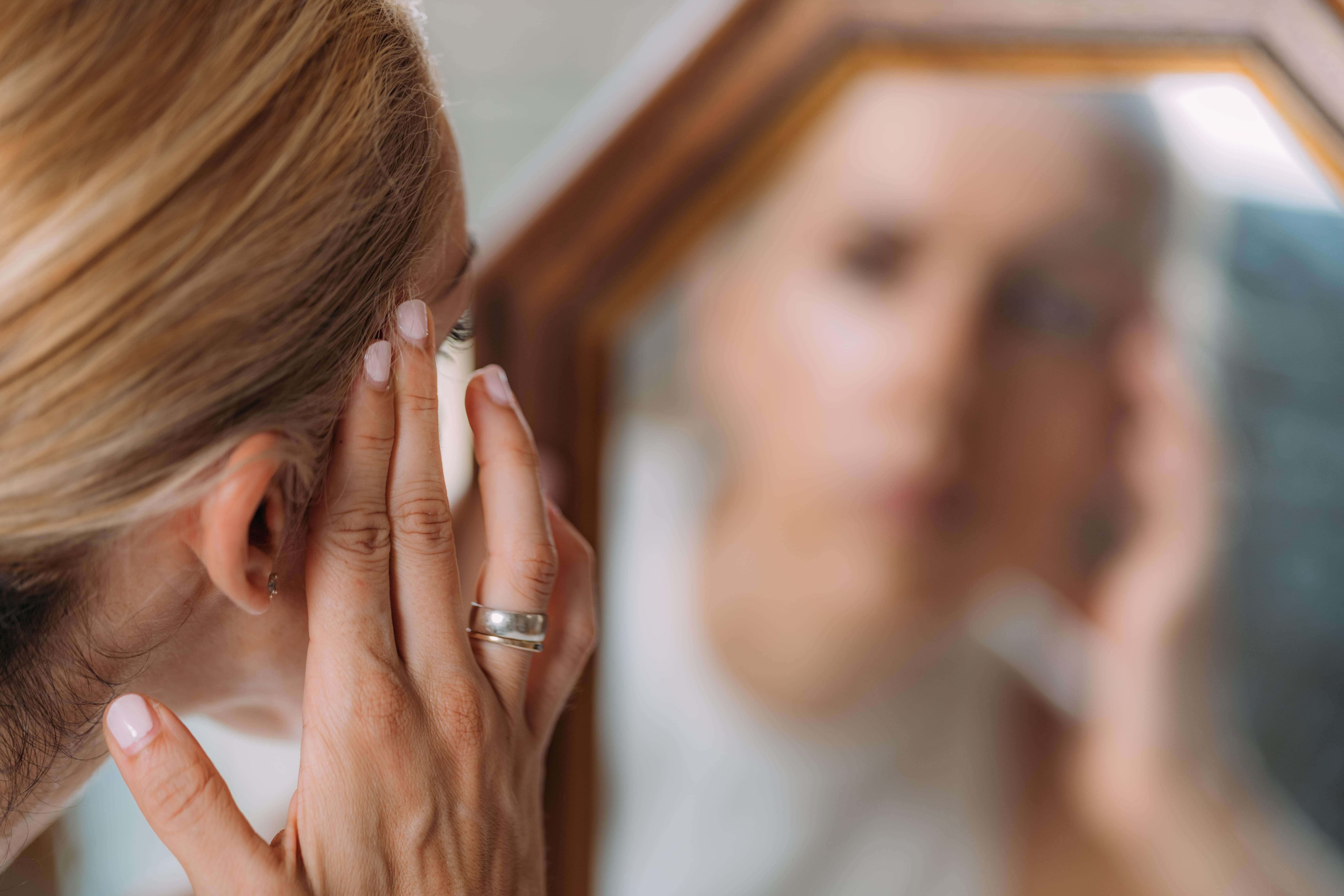Few people are completely happy or satisfied with their physical appearance. Most have one or more things they would like to change, but others find themselves unable to control their negative thoughts about their appearance. They may spend hours daily dwelling on these perceived faults and avoid social situations because they fear others seeing what is “wrong” with them. When negative thoughts take over in this way, the person has a severe mental health condition known as body dysmorphic disorder (BDD).
The International OCD Foundation estimates that about 1 in 50 people have BDD, although the numbers may be higher because people with the condition often don’t tell others. At a minimum, somewhere between 5 million and 10 million Americans live with BDD. When left untreated, people with BDD risk developing major depression because they may cut themselves off from the world because of their extreme self-consciousness. They may also engage in multiple surgical procedures to correct their perceived faults.
Symptoms of BDD
Typically, BDD begins in teenagers and seems to affect men and women equally. The flaws an individual becomes obsessed with may only be minor if there is one, but for the person, it is significant. Signs that point to someone dealing with this condition include:
- Being very focused on a perceived flaw in appearance that can’t be seen or appears minor to others
- A strong belief that a perceived defect in their appearance makes them ugly or deformed
- The belief that others take special notice of their appearance in a negative way or mock them
- Engaging in behaviors aimed at fixing or hiding the perceived flaw that are difficult to resist or control, such as frequently checking the mirror, grooming, or skin picking
- Trying to hide perceived flaws with makeup or clothes
- Constantly comparing their appearance with others
- Frequently seeking reassurance about their appearance from others
- Having perfectionist tendencies
- Seeking cosmetic procedures with little satisfaction
- Avoiding social situations
Causes of BDD
Currently, there is no one reason someone develops body dysmorphic disorder. Experts have several ideas, including a biological component, because those with BDD often also have depression or anxiety. The theory is that the condition involves an issue with the size or functioning of certain brain areas where information about appearance is processed. Other potential risk factors for BDD include:
- Experience of traumatic events or emotional conflict during childhood
- Low self-esteem
- Parents and others who were critical of the person’s appearance
- Pressure from peers and a society that equates physical appearance with beauty and value
Diagnosing and Treating BDD
Rarely does BDD improve without help from a trained professional. If a doctor suspects that someone may be dealing with the condition, they will refer the person to a specialist trained to handle mental health diagnoses. This expert can then determine what help the individual needs based on their attitude, behavior, and symptoms. Unfortunately, many people with the condition are too embarrassed to seek help. One red flag for BDD is seeking plastic surgery frequently.
Treatment for the condition involves a combination of therapy and medication. While the FDA has not explicitly approved any medicines to treat body dysmorphic disorder, some selective serotonin reuptake inhibitors (SSRIs) used to treat depression and certain antipsychotic prescriptions seem to be helpful.
Therapies, such as cognitive behavioral therapy or other forms of behavioral therapy, can also help. Both help the individual focus on changing their thinking to correct false beliefs about their body and appearance. These therapies teach the person how to minimize compulsive behaviors resulting from their obsessive focus on perceived faults.
Finally, the support of family and loved ones is instrumental in the treatment of BDD. Family therapy can help family members recognize the signs and symptoms of body dysmorphic disorder and understand how it affects their loved ones.
While a person cannot prevent BDD, the condition has a positive outlook when treatment is sought and followed. Supporting the individual as they seek to develop realistic and healthy attitudes about their appearance and body is critical. Understanding the person’s condition also aids them in decreasing their symptoms and encourages them to find healthier ways to cope with their negative thoughts.
A licensed mental health and substance abuse intensive outpatient program (IOP) in Scottsdale, Arizona, Rising Phoenix was created to offer a safe, welcoming and nurturing environment where clients are not judged, but embraced, throughout their recovery process.

